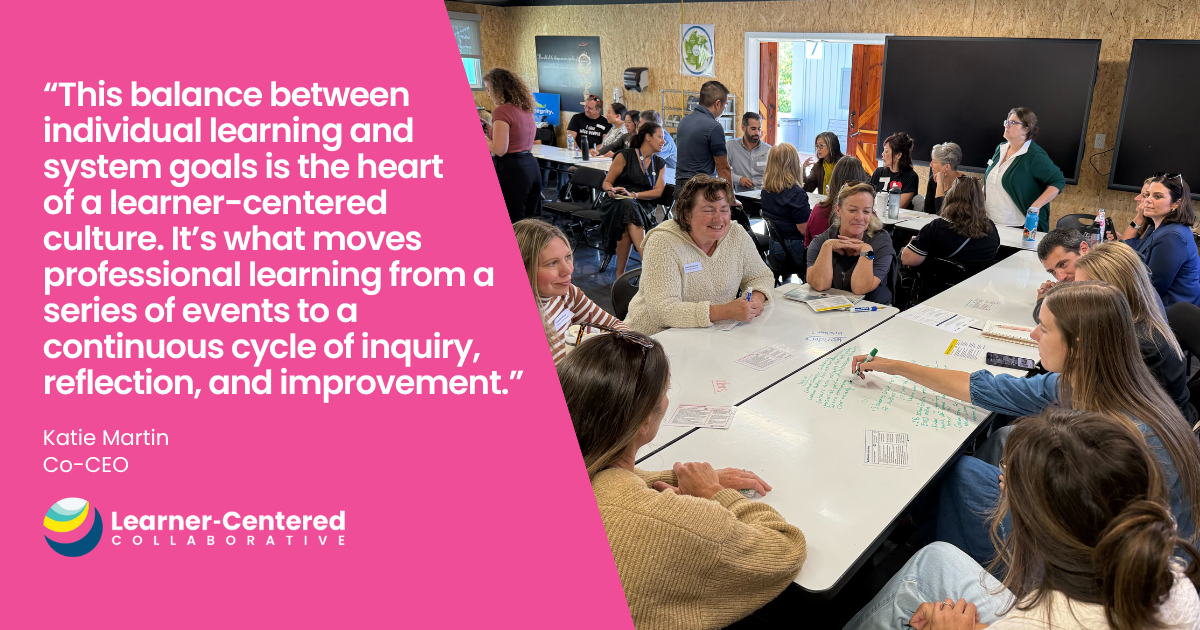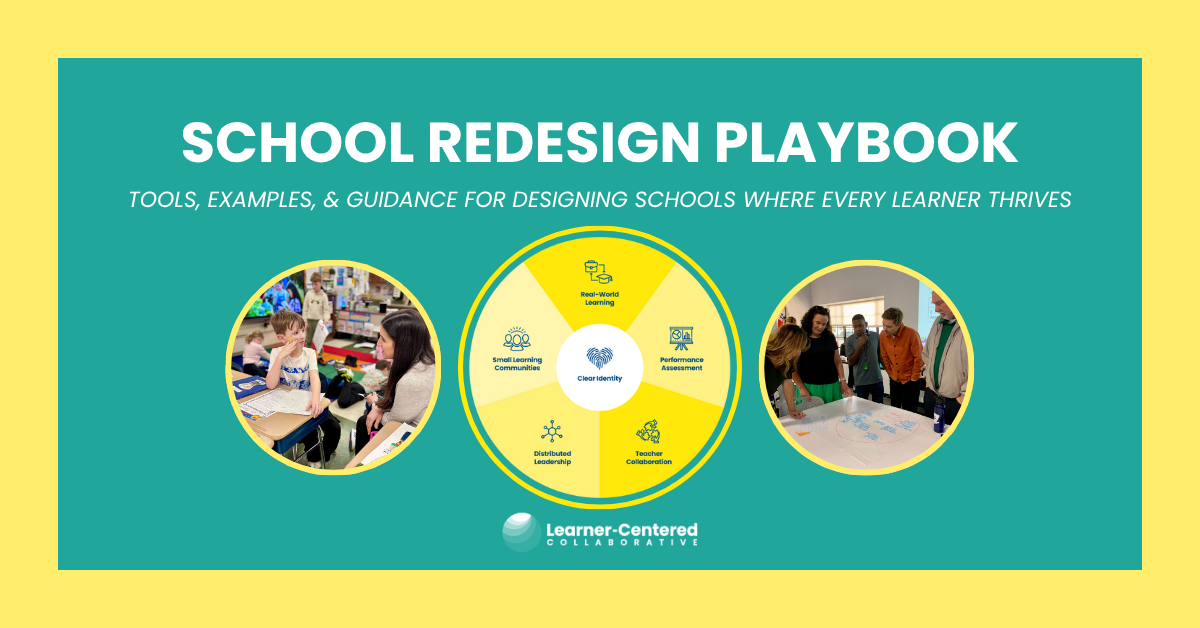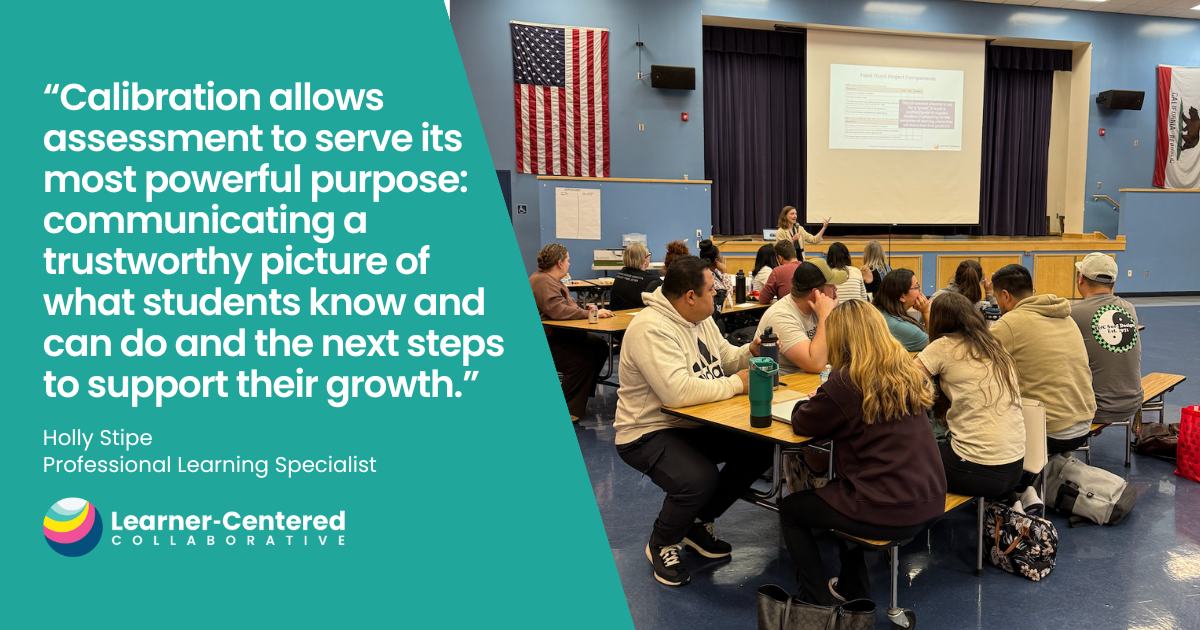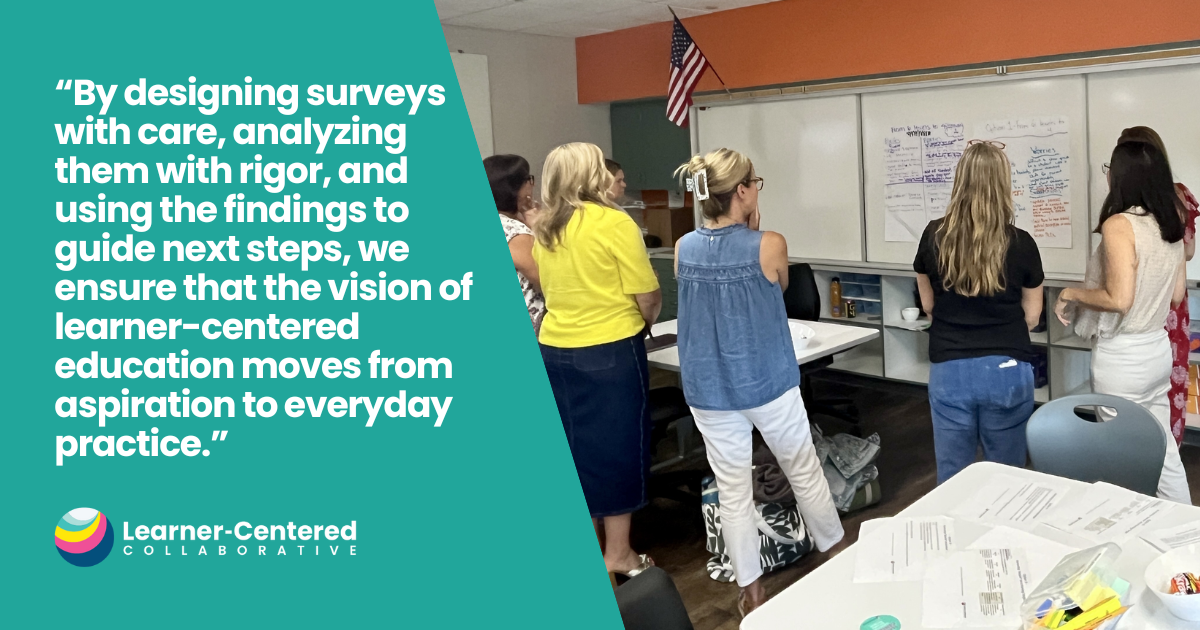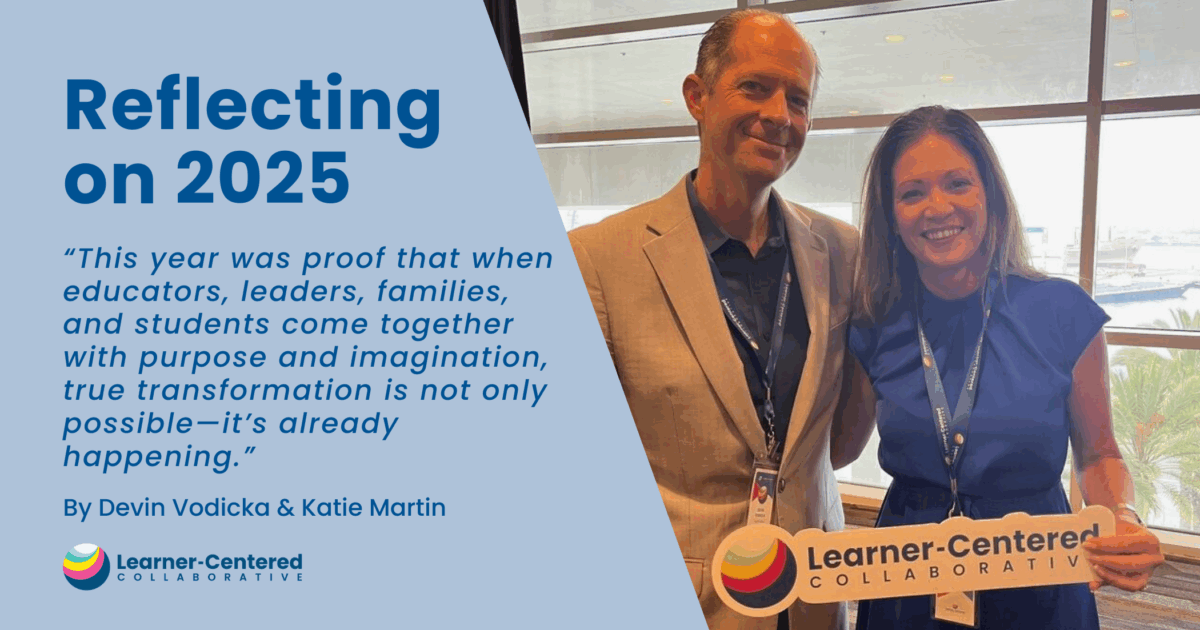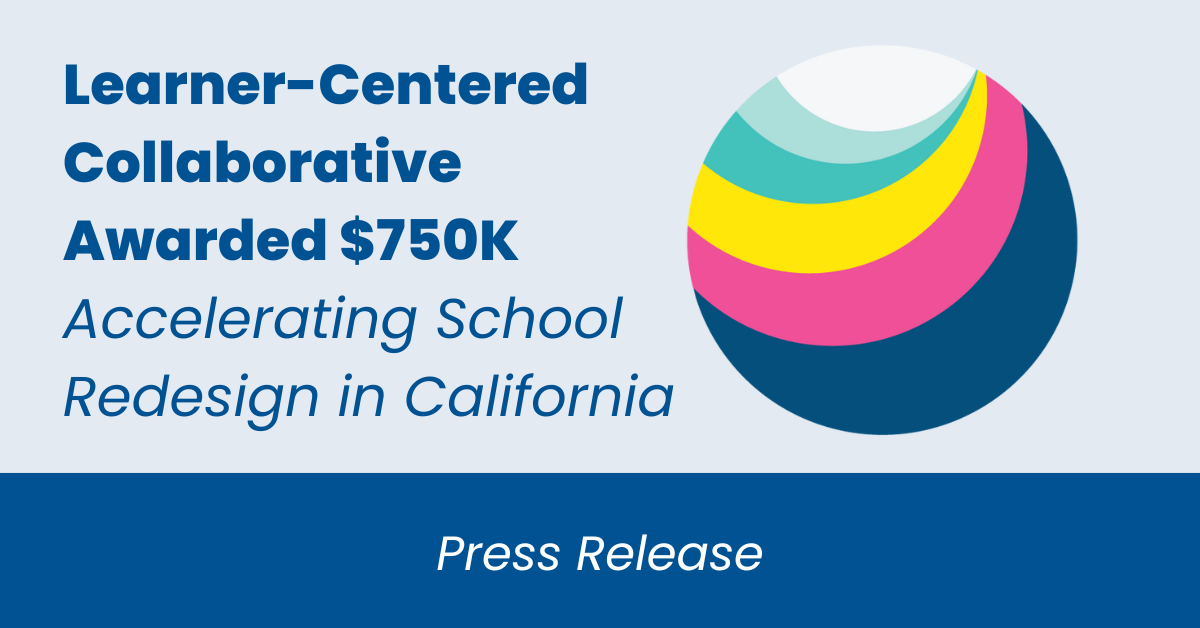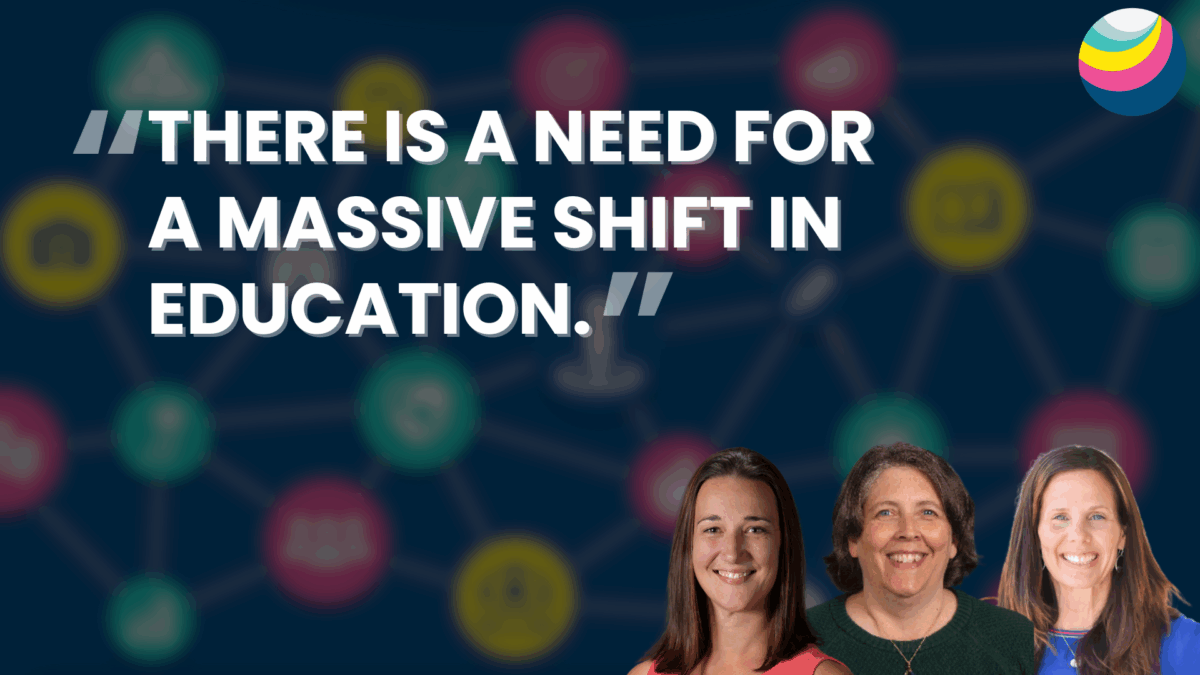Designing for What Matters Most: How Unit Design PD Brings Our Learner Profile to Life
By Chad Mabery, Ed.D., Assistant Superintendent of Instructional Services at Laguna Beach Unified School District
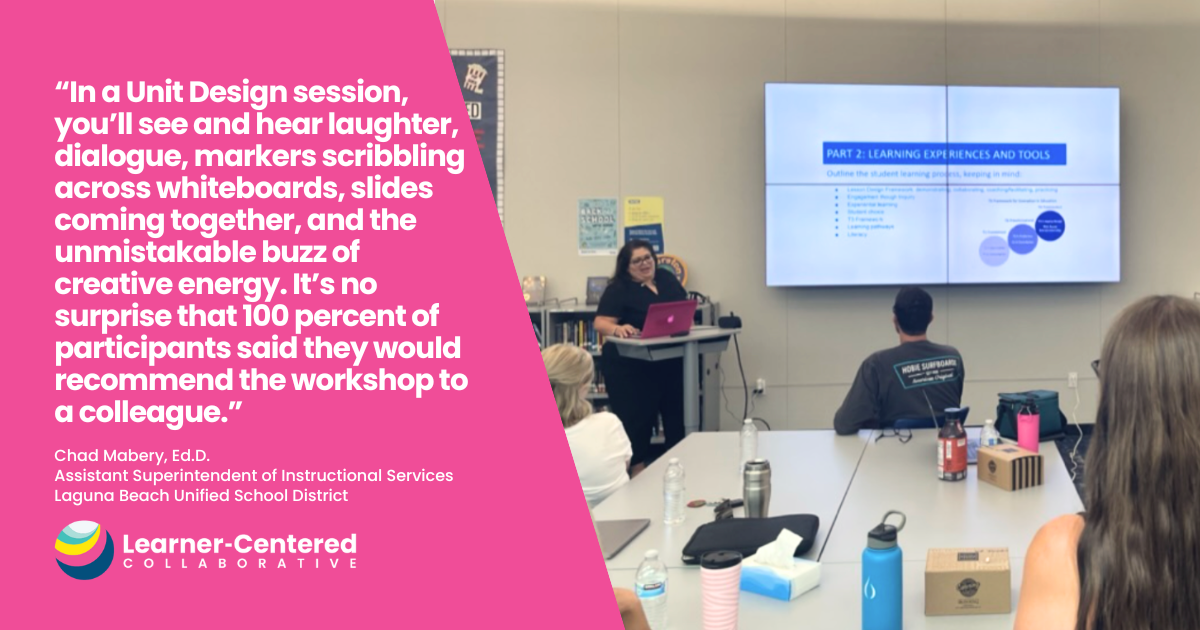 “Have you ever taught a unit of study that students just don’t seem to enjoy? Do you have a unit of study that you dread teaching every year? We’ll pay you to redesign it!”
“Have you ever taught a unit of study that students just don’t seem to enjoy? Do you have a unit of study that you dread teaching every year? We’ll pay you to redesign it!”
That’s the sales pitch through which the Laguna Beach Unified School District (LBUSD) Unit Design Professional Development (PD) began. After the development of our Learner Profile, we wanted to elevate our own internal team of teachers as experts to redesign units of study, one teacher and one unit at a time. In order to do this, we allocated funds from our professional development budget specifically for paying our own team for their expertise.
Since launching in 2022, we’ve hosted nine voluntary Unit Design sessions with more than 70 percent participation rate by our teachers. Together, teachers have re-designed nearly 200 units, that we know of, across all grade levels and subject areas. Most of these units include a sustainability focus, social-emotional learning, or authentic community impact.
Some teachers have gone on to share their work at conferences or publish articles. But the real success lies with the students:, where
- 78 percent of teachers report participating in challenging learning activities,
- 84 percent of teachers report participating in relevant learning experiences, and
- 88 percent of teachers report they have at least one adult at school who supports them.
Hear directly from a teacher in LBUSD about a unit they redesigned through a Unit Design Professional Development cohort in Connections, school visits, webinars, and more.
LBUSD Unit Design PD is the cornerstone of our Personalized PD model, providing teachers dedicated design time, the agency to reimagine learning experiences, and practical professional learning for research-based pedagogy. We found that when we empower teachers to design with intention, anchored in our Learner Profile and a commitment to relevancy, inclusivity, and student voice, the teaching stops being a routine and becomes a professional craft.
Through our Unit Design PD, we are not just fine-tuning lessons. We’re reimagining the very purpose of school by empowering students to make meaning, solve problems that matter, and connect with the world around them.
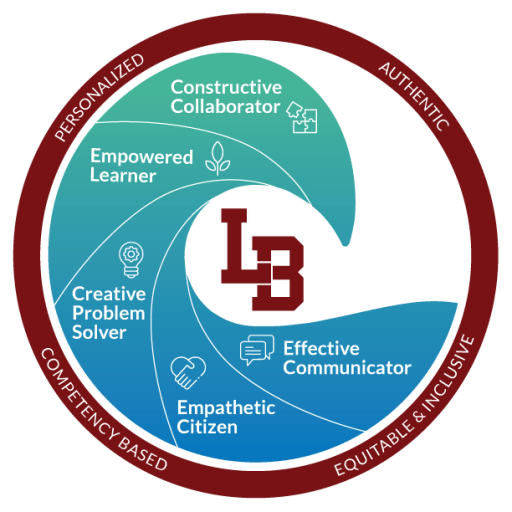
Laguna Beach USD’s Learner Profile which defines, defining the whole-learner outcomes that each learner in the LBUSD system will develop from K-12.
A Different Kind of Unit Design
This isn’t just another PD workshop. Unit Design PD is a comprehensive, three-day experience that brings together educators from all grade levels and subject areas. The goal is clear: co-design inquiry-based, innovative, and competency-based learning units that align with the LBUSD Learner Profile and our commitment to real-world relevance.
Teachers begin by crafting essential questions – the kind that stick in students’ minds long after the unit ends. For example, “How does renewable energy impact the environment?” or “What can we do to create change in our community?”
These kinds of questions lead to units that matter; not just academically, but personally and globally. These questions spark curiosity, fuel critical thinking, and invite learners to grapple with real issues.

From there, teachers build out units using the LBUSD Unit Design Template, embedding personalized learning and competency-based assessments that not only address California State Standards, but also intentionally build durable skills.
In between design time, teachers experienced high-impact pedagogy, including John Hattie’s Visible Learning strategies, Sonny Magana’s T3 Framework for meaningful tech integration, LBUSD’s Signature Practices, presentations of learning, and AI integration.
The experience culminates in a symposium-style showcase attended by colleagues and administrators, where educators present their units, share reflections, and celebrate one another’s work. It’s professional learning at its best: authentic, connected, and energizing.
What Educators Are Saying
We often talk about engagement in student learning, but what about teacher learning? If you walk into a Unit Design session, you’ll see and hear laughter, dialogue, markers scribbling across whiteboards, slides coming together, and the unmistakable buzz of creative energy. It’s no surprise that 100 percent of participants said they would recommend the workshop to a colleague.

Here’s what some of the educators shared:
- “I was able to work with colleagues from different grade levels and school sites. It was so nice to meet new people and pick their brains!”
- “The amount of design time. So helpful to have the time throughout the day to work and apply what we learned.”
- “I loved the entire process. It seemed to me that a LOT of thought was put into the design of the 3-day plan.”
- “It provided me with the time to reflect on a unit, and it gave me the tools to be able to improve it and make it more engaging, student-centered, and interactive.”
What Students Are Saying
We believe strongly in listening to the learners themselves. Our post-unit student surveys show that:
- 87 percent of students found the redesigned units more interesting than traditional ones.
- 70 percent of students said they wanted to experience more units like this.
Students are noticing the shift. They’re responding to learning that feels real, purposeful, and challenging in the right ways. And teachers are feeling it too. The design process isn’t just transforming units, it’s transforming practice.
Designing Through the Lens of the Learner Profile
At the heart of Unit Design is our LBUSD Framework for the Future, co-developed with our partners at the Learner-Centered Collaborative. This profile defines not just what we want students to know, but it’s our north star in what we hope they will become.
| Learner Outcome | What Unit Design Enables |
| Empowered Learner | Students co-construct meaning and reflect on learning in meaningful ways |
| Creative Problem Solver | Units are framed around real-world essential questions and inquiry |
| Effective Communicator | Assessments include authentic audiences and multimodal products |
| Constructive Collaborator | Group work is purposeful, with norms, structures, and shared accountability |
| Empathetic Citizen | Projects connect to the community, environment, or global sustainability |

Each group must answer essential questions to develop their lesson.
Every unit is crafted with these outcomes in mind, integrating the four signature learning experiences that support them: authentic and relevant, personalized, equitable and inclusive, and competency-based.
The icing on the cake is a handful of gamified option stipends for taking their unit to the next level. LBUSD teachers now receive the following for integrating these innovative lessons into their classrooms:
- $200 for co-designing lessons with another teacher outside of their department or grade level
- $200 for co-planning a lesson with teachers outside of the district
- $300 for integrating place-based learning within the local community
- $300 for sustainability-focused units
- $600 to write an article or present at a conference.
We’ve seen how this personalized professional learning model shifts thinking beyond the redesigned unit. For example:
- A teacher who once started with a textbook chapter now begins with a student’s question.
- Another teacher replaced a multiple-choice test with a student-led podcast. Lessons on iambic pentameter now include student-created digital books that are read to our kindergartners.
- Our first graders are drawing monsters that the high school ceramics class creates in 3-dimensions to return and share with the students.
- Fourth-grade students design guides to the local community for tourists to use with their children.
- Algebra students are comparing the environmental and economic impact of electric vehicles.
These are signs that our system is shifting toward a deeper, more connected learner-centered approach.
What’s Next?
We’re now heading into our tenth cohort and fourth iteration of Unit Design PD, and the momentum continues to grow. Each cohort brings new challenges, new ideas, and new commitments to learner-centered education. But the core idea remains the same: intentional design matters. When we make the time and resource commitment to our educators, the students thrive as their best selves in a more connected, meaningful learning experience.

